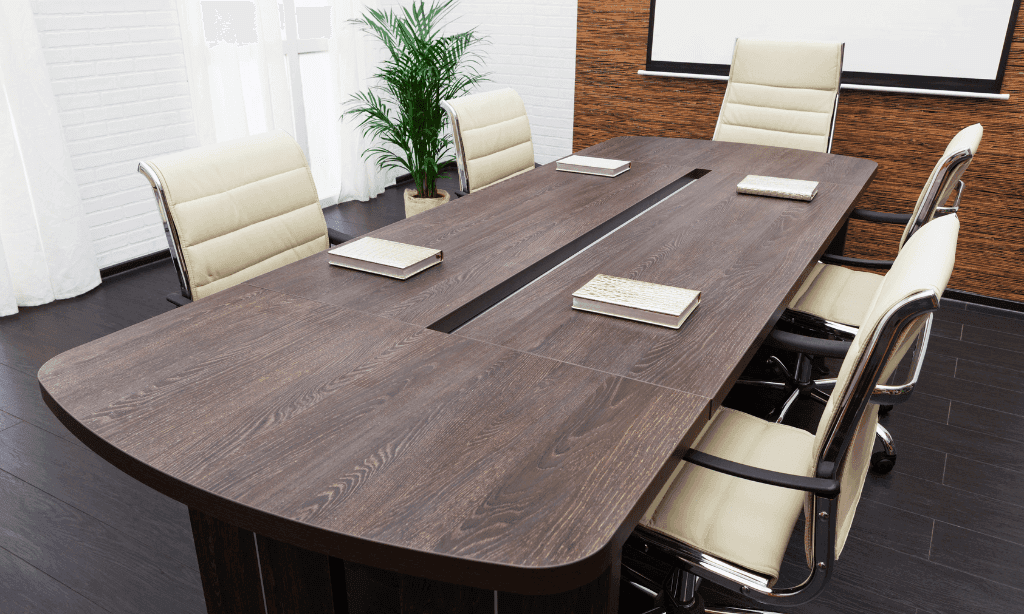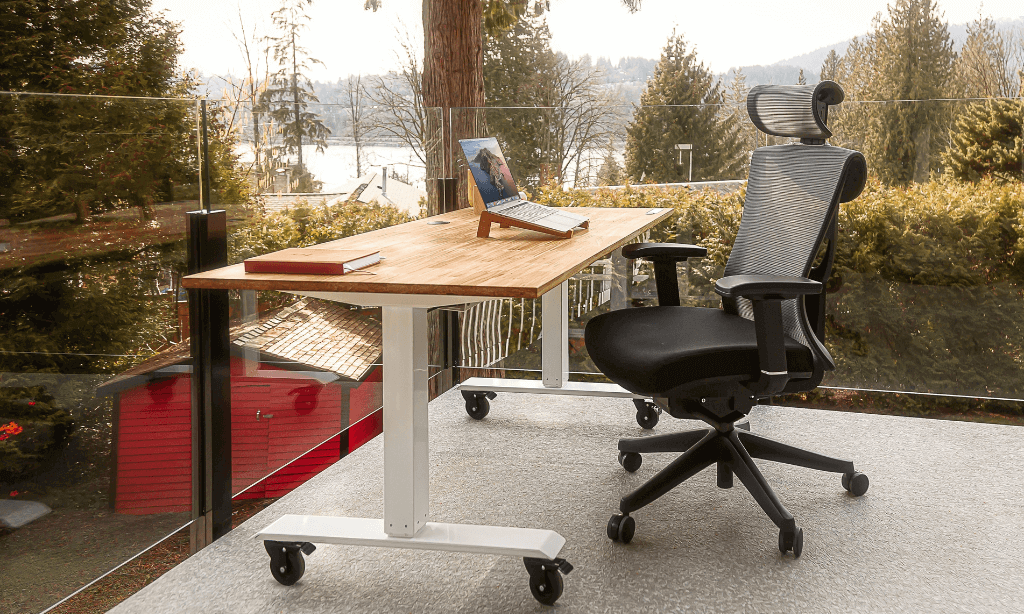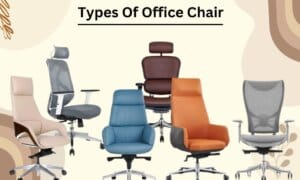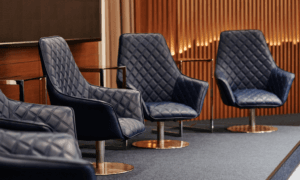Types of Modular Desking Furniture: Modular desking furniture has become a key element in modern office design, offering flexible and customizable solutions to meet various workplace needs. From enhancing collaboration to optimizing compact spaces, these versatile desks provide a range of options to suit different environments. This guide explores the types of modular desking furniture, their features, and how they can enhance your workspace.
Types of Modular Desking Furniture
Here are top 12 types for modular desking furniture:
1. Bench Desks
Bench desks are long, shared work surfaces designed to accommodate multiple users simultaneously. These desks are ideal for open-plan offices where collaboration and teamwork are key priorities.
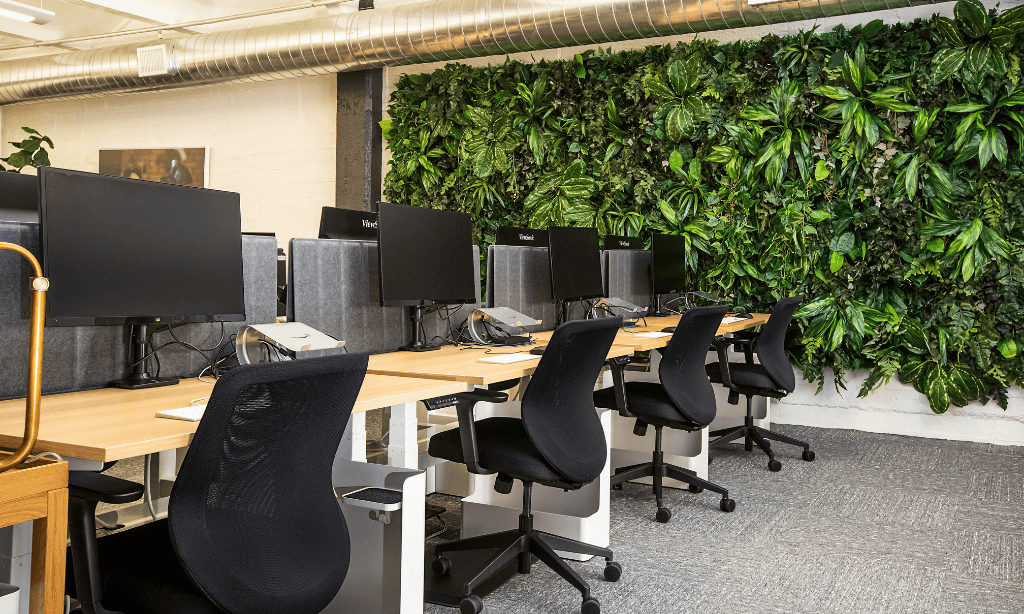
Feature: Bench desks can be configured into rows or clusters to suit the office layout. They often include built-in cable management systems to maintain a clean and organized appearance, making them both practical and aesthetically pleasing.
Best For: Open-plan offices, co-working spaces, and environments that emphasize collaboration and teamwork.
Advantages: These desks save space by eliminating individual workstations and promote better interaction among team members.
2. L-Shaped Desks
L-shaped desks feature a primary work surface with an additional perpendicular section, offering ample space for multitasking professionals.

Features: These desks can be paired with privacy panels to create individual workstations, ensuring comfort and productivity. They are also highly adaptable, and easily reconfigurable into clusters for team-based setups.
Best For: Professionals who require additional workspace for multitasking or managing multiple screens.
Advantages: With their versatile design, L-shaped desks are perfect for balancing collaboration and individual focus.
3. Cluster or Pod Desks
Cluster desks, also known as pod desks, are arranged in groups to foster collaboration and teamwork. They come in various configurations such as 3-person, 4-person, or even 6-person pods.
Features: These desks often include shared central storage units or power modules, making them convenient for team projects. They are available in unique shapes like circular or hexagonal layouts to suit different needs.
Best For: Collaborative teams that require constant interaction.
Advantages: Cluster desks maximize space utilization while fostering teamwork and communication.
4. Adjustable Height Desks (Sit-Stand Desks)
Adjustable height desks are designed with health and ergonomics in mind, allowing users to switch between sitting and standing positions.
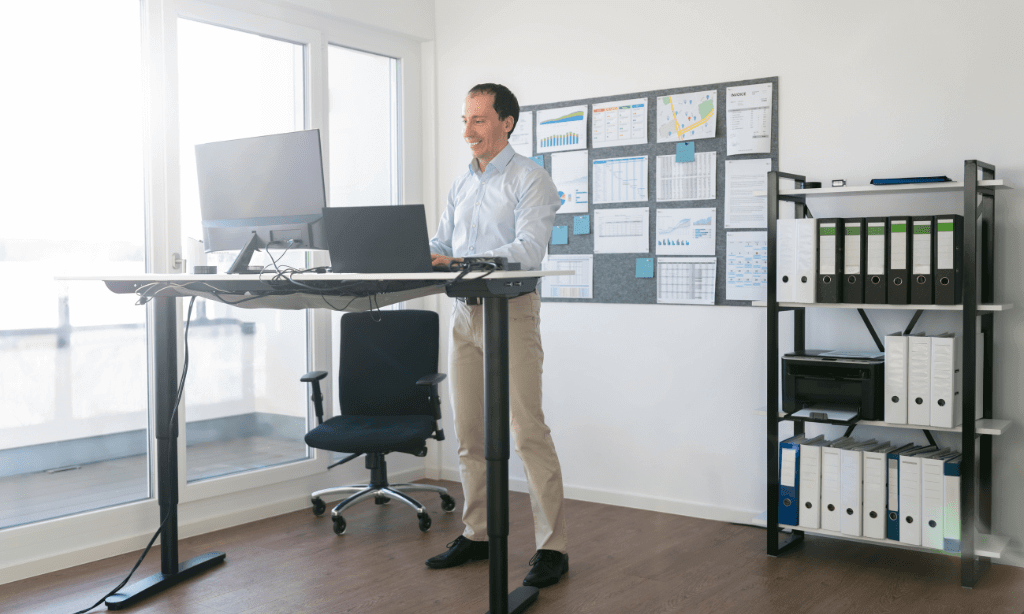
Features: These desks can be manually adjusted or powered by electric mechanisms for convenience. They can also be integrated into larger modular systems.
Best For: Offices prioritizing employee well-being and ergonomics.
Advantages: Sit-stand desks help reduce health risks associated with prolonged sitting and improve productivity by promoting movement.
5. Folding or Flip-Top Desks
Folding or flip-top desks offer a practical solution for spaces that require frequent reconfigurations.
Features: These desks often include lockable wheels for easy mobility and are stackable for compact storage. Their foldable design makes them highly versatile for dynamic environments.
Best For: Multi-purpose spaces like training rooms, conference halls, or event areas.
Advantages: They allow quick transformations of the workspace and are easy to store when not in use.
6. Panel-Based Workstations
Panel-based workstations combine desks with partition panels, creating semi-private spaces within open office layouts.
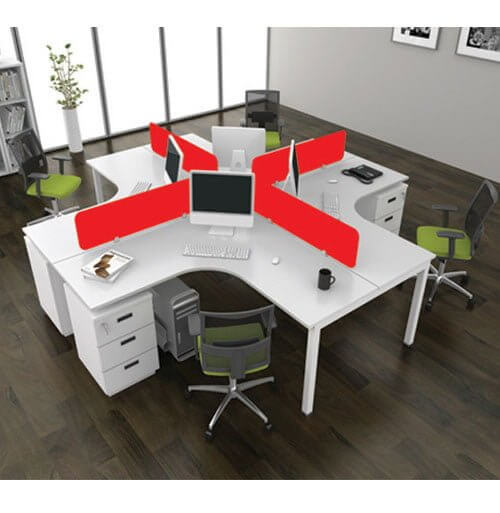
Features: These workstations include modular panels that can be adjusted to create custom workstation sizes. They often come with integrated storage or accessory add-ons.
Best For: Offices seeking a balance between collaboration and focused individual work.
Advantages: They offer flexibility, privacy, and the ability to adapt as office needs change.
7. Freeform or Curved Desks
Freeform or curved desks feature unique, organic shapes that add a touch of creativity to any workspace.
Features: These desks can be configured into distinctive layouts and combined with straight desks to create visually appealing designs.
Best For: Creative spaces, design studios, or offices prioritizing aesthetics and innovation.
Advantages: Their unconventional shapes encourage creativity and make the workspace more inviting.
8. Modular Desking Systems with Integrated Storage
These desks integrate storage solutions such as cabinets, shelves, or drawers directly into their design.
Features: Options include under-desk storage or side-mounted units, with lockable designs for secure storage. They’re perfect for keeping workspaces organized and clutter-free.
Best For: Offices or workspaces with limited space.
Advantages: Combining desks with storage optimizes space and enhances functionality.
9. Hot-Desking Stations
Hot-desking stations are minimalistic desks designed for shared use in flexible office environments.
Features: These stations typically include docking stations, power outlets, and universal designs that cater to different users.
Best For: Offices with hybrid or rotating work models.
Advantages: They save space and provide a cost-effective solution for businesses with dynamic workforces.
10. Training Tables
Training tables are lightweight and modular desks designed for educational or training purposes.
Features: These desks often include flip-top mechanisms and wheels for easy mobility and storage. Their modular nature allows quick reconfigurations.
Best For: Training rooms, seminars, or educational settings.
Advantages: They are easy to move, store, and set up, making them ideal for dynamic learning environments.
11. U-Shaped Desks
U-shaped desks offer maximum workspace with a central surface and two side extensions.

Features: Compatible with modular storage units, these desks can also be reconfigured into separate pieces if needed.
Best For: Executive offices, managerial workspaces, or professionals handling extensive tasks.
Advantages: They provide a spacious and organized environment, perfect for high-level roles.
12. Modular Wall-Mounted Desks
Wall-mounted desks are space-saving solutions that fold away when not in use.
Features: These desks often include integrated shelves or cabinets, offering storage without occupying floor space.
Best For: Home offices or compact workspaces.
Advantages: Their minimal footprint and multi-functional design make them perfect for small areas.
Also Reas:
- 7 Key Factors to Consider When Buying an Office
- 5 Best Ergonomic Office Chairs for Long Hours Sitting
Frequently Asked Questions
Q1: What is modular desking furniture?
Modular desking furniture consists of customizable desks designed to adapt to different office layouts and work styles. They offer flexibility and can be reconfigured as needed.
Q2: Which modular desk is best for small offices?
Wall-mounted desks and modular systems with integrated storage are ideal for small offices due to their space-saving designs.
Q3: Are adjustable height desks worth the investment?
Yes, adjustable height desks promote better ergonomics and health by allowing users to alternate between sitting and standing.
Conclusion,
Modular desking furniture provides flexibility, style, and functionality to suit modern workspaces. It is ideal for open-plan offices, collaborative hubs, or compact home offices. With various types of modular desking furniture available, such as adjustable desks, benching systems, and multi-functional workstations, you can create a productive and comfortable environment that adapts to changing needs.

